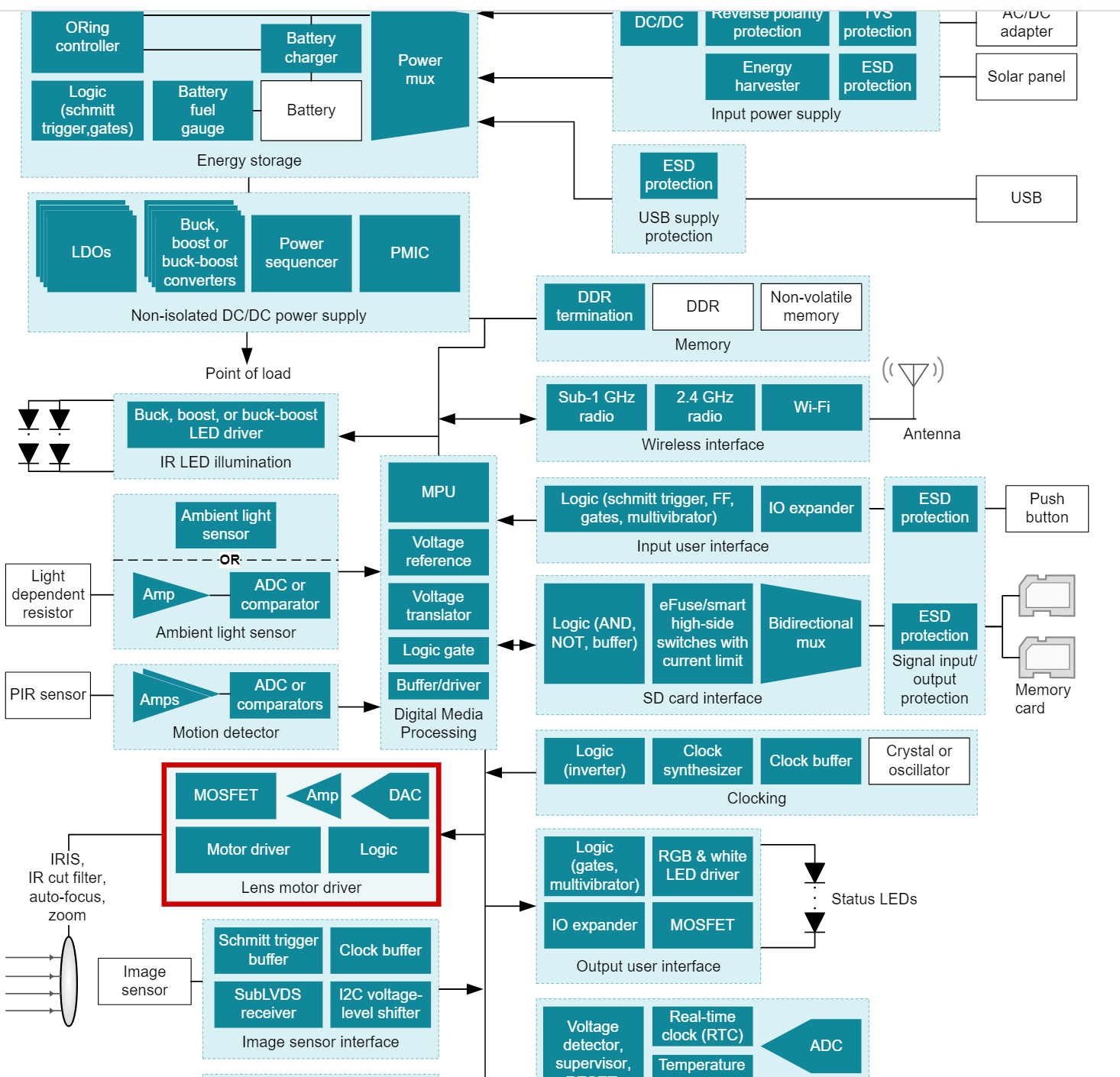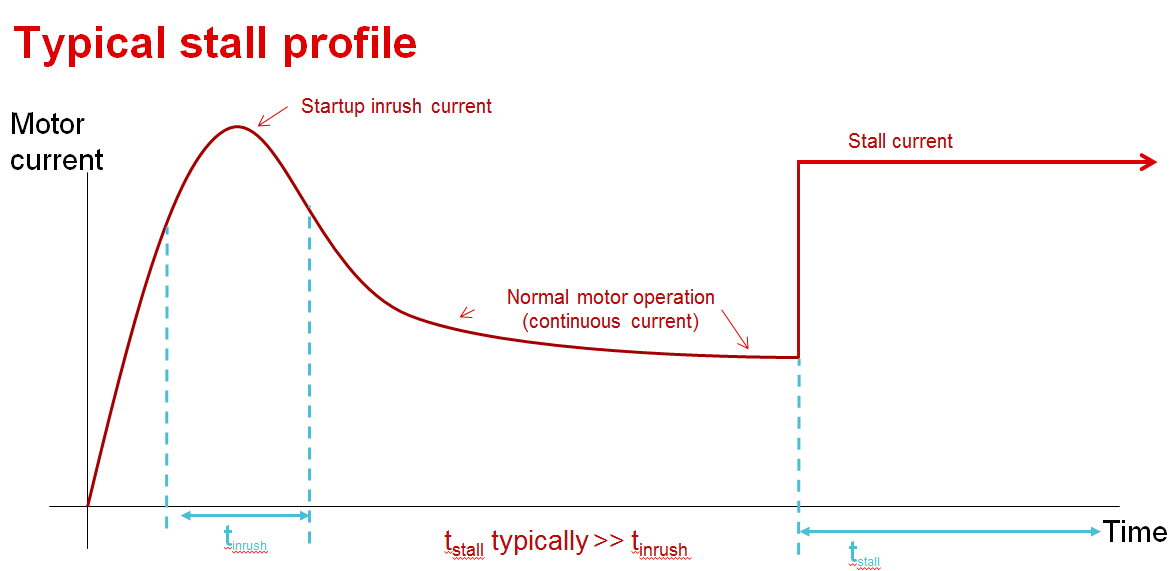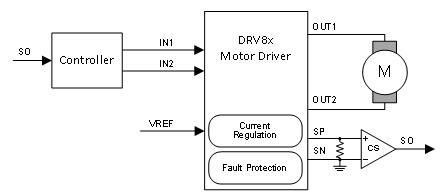SSZT392 october 2019 DRV8210 , DRV8210P , DRV8800 , DRV8832 , DRV8837 , DRV8837C , DRV8838 , DRV8870 , DRV8874 , DRV8876
Over the past decade, automation has taken the leap from factories and assembly lines to our very own homes and office buildings, making the places we work and live in smarter and more modern to adapt to our ever-changing lifestyles. These smart home systems have experienced significant growth primarily due to the convenience and safety they bring to residents, along with increased efficiency and cost-savings.
Smart home automation requires actuation, and whether that is moving a camera’s night vision filter, electronic lock closure, relay closure or opening or other forms of movement, a motor drive solution can help shrink size, enhance reliability and reduce cost in these systems.
Since there is much to discuss, we will split this into a two part series. Part one will cover video doorbells, night vision filters and electronic smart locks, while part two will cover smart thermostats and motorized window blinds. These smart home systems have many of the same design challenges as their industrial counterparts, but also have the added struggle of fitting into smaller solution sizes. Motor drivers can help solve this problem of added functionality in a small footprint.
Part one: safety and convenience
Video Doorbells
Video doorbells add a level of security so residents can monitor activities without having to open the door. Depending on the video doorbell type, when the doorbell is pressed or when an object comes into the field of vision, a video feed appears on a connected smart phone, and the resident can clearly view or record the event, even when away from home. Figure 1 illustrates the complexities of video doorbell design.
 Figure 1 Battery-powered video doorbell
system reference design
Figure 1 Battery-powered video doorbell
system reference designDesign challenges:
Night vision:
One important consideration while designing video doorbells is maintaining a clear picture during low-light and night time conditions. This means the camera needs to be able to have some form of night vision. The most common way for video surveillance systems to achieve this is by utilizing an IR Cut Filter method. An infrared filter is applied to the camera sensor during day time and normal light conditions, to reduce noise and provide a clear picture.
 Figure 2 Video surveillance camera with IR LEDs and an IR cut filter for night vision
Figure 2 Video surveillance camera with IR LEDs and an IR cut filter for night visionThe IR cut filter is lightweight, so not much current or torque is required to move it and typically less than 650mA of current is adequate to move the filter. Video doorbells are commonly battery powered so reducing power consumption when not actively driving the filter is important to extend battery life. Having a typical sleep current of 35nA, a low-power brushed-DC motor driver like the DRV8837C is a good solution for this application. It supports 1.8V-11V so it can accommodate multiple battery setups, like alkaline or lithium ion. With its small 2x2mm QFN package, low power consumption and protection, the DRV8837C is a robust device for these video doorbell systems.
Electronic smart locks:
Smart locks are not a new concept in building security systems, and are already in widespread use in businesses and hotels. However, proliferation of smart locks in residential units is recent and partially owes its growth to the rise of connectivity features to allow control the lock remotely with a smart phone. The basic motor function in the smart lock is to control the position of the deadbolt or latch. In most systems, a brushed-DC motor is used for this application due to its low necessary component and ease of design.
Design Challenges:
System reliability and power savings:
When the door is locked, the motor moves the bolt or latch from open position to closed, and vice-versa when the door is being unlocked. As seen in Figure 3 it is common in smart locks to use position sensing methods like Hall-effect, encoder, or accelerometer to detect when the bolt reaches the end of closure so the motor is turned off.
 Figure 3 Sections of an electric smart
lock
Figure 3 Sections of an electric smart
lockTurning the motor off at the point of closure avoids over-driving the motor and reduces mechanical strain on the motor, which helps maximize battery life and extends the lifetime of the brushed-DC motor.
The same benefits can be achieved by sensing current in the motor windings and implementing stall detection with motor driver and microcontroller. The basis of this approach is that during motor stall events, such as when an object meets a mechanical stop or end of travel, current in the motor windings is much higher than when operating under normal driving conditions as seen in Figure 4.
 Figure 4 Typical motor current profile
during startup (inrush) current, continuous current and stall event
current
Figure 4 Typical motor current profile
during startup (inrush) current, continuous current and stall event
currentThere are several ways this can be achieved. The first method uses low-side current sensing with a shunt resistor placed across the low-side MOSFET in the H-bridge and ground. A current sensing operational amplifier measures the voltage drop across the resistor and outputs a scaled-down voltage, based on measured current in low-side MOSFET, to a microcontroller’s ADC, as illustrated in Figure 5.
 Figure 5 Low-side current sensing approach to stall detection
Figure 5 Low-side current sensing approach to stall detectionA threshold can be set in the microcontroller’s software to recognize stall events based on the motor’s known current during fully open or fully closed conditions. When the sensed current in the motor is above the set threshold a stall condition is flagged, notifying the microcontroller of the dead bolt’s end of travel. At this point, the motor driver can shut-down operation. Devices like the DRV8832, DRV8800 and DRV8870 have dedicated current sensing pins to accommodate the sense resistor.
The second method is a similar premise, but this approach saves board space and BOM (bill of materials) cost by incorporating the current sense function into the motor driver itself. In this method, current sensing is integrated in the motor driver IC using a current mirror and set reference current using a small biasing resistor. In the DRV8876 and pin-to-pin DRV8874, this sensed current is then down-scaled and output from an IPROPI pin to the microcontroller’s ADC (Figure 6).
 Figure 6 DRV887x, brushed-DC motor driver with integrated current sensing and feedback for stall detection
Figure 6 DRV887x, brushed-DC motor driver with integrated current sensing and feedback for stall detectionFrom there, the implementation of stall events and end of travel detection is the same as the first method. The second method makes board space smaller, requires fewer passive components and ICs, and saves battery power by not needing dissipating power across a large sense resistor.
Extending battery life:
Because video doorbells and smart locks are often battery powered, extending the battery life is critical to ensure consistent monitoring and access. Our DRV8837, DRV8837C and DRV8838 have a low power sleep mode that the device can be put into when it is not driving the motor. In this state, the motor driver typically pulls 35nA keeping the overall current draw in the system to a minimum, extending battery life. Check out this smart lock reference design that explains how to achieve five or more years of life with four AA batteries.
Additional resources
- Read the TechNote: “Advantages of integrated current sensing.”
- Explore the TI Application Specific Reference Designs;